
- Home
- India
- World
- Premium
- THE FEDERAL SPECIAL
- Analysis
- States
- Perspective
- Videos
- Sports
- Education
- Entertainment
- Elections
- Features
- Health
- Business
- Series
- In memoriam: Sheikh Mujibur Rahman
- Bishnoi's Men
- NEET TANGLE
- Economy Series
- Earth Day
- Kashmir’s Frozen Turbulence
- India@75
- The legend of Ramjanmabhoomi
- Liberalisation@30
- How to tame a dragon
- Celebrating biodiversity
- Farm Matters
- 50 days of solitude
- Bringing Migrants Home
- Budget 2020
- Jharkhand Votes
- The Federal Investigates
- The Federal Impact
- Vanishing Sand
- Gandhi @ 150
- Andhra Today
- Field report
- Operation Gulmarg
- Pandemic @1 Mn in India
- The Federal Year-End
- The Zero Year
- Science
- Brand studio
- Newsletter
- Elections 2024
- Events
- Home
- IndiaIndia
- World
- Analysis
- StatesStates
- PerspectivePerspective
- VideosVideos
- Sports
- Education
- Entertainment
- ElectionsElections
- Features
- Health
- BusinessBusiness
- Premium
- Loading...
Premium - Events
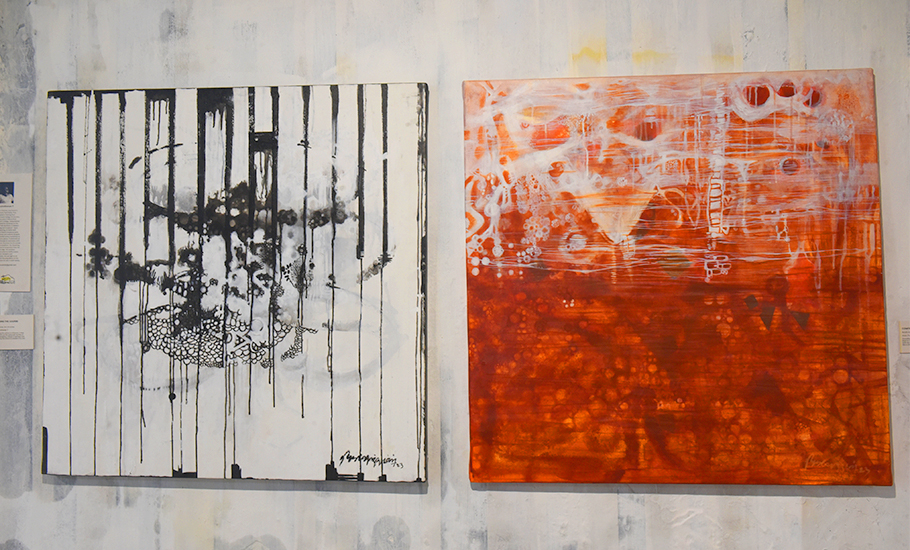
In Photos: How Thinai Vaasigal exhibition packs centuries under one roof in Tamil Nadu

A world that existed from the 3rd century BC to 3rd century AD, a world that stood witness to the 1968 massacre of Keezhvenmani, a world that dropped its jaw upon witnessing the discoveries of Keezhadi excavations in Tamil Nadu were all paced under one roof on March 8 and will stay so till April 10, representing a continuum in time, drawing attention to all that has changed and all that...
A world that existed from the 3rd century BC to 3rd century AD, a world that stood witness to the 1968 massacre of Keezhvenmani, a world that dropped its jaw upon witnessing the discoveries of Keezhadi excavations in Tamil Nadu were all paced under one roof on March 8 and will stay so till April 10, representing a continuum in time, drawing attention to all that has changed and all that remains much the same despite the centuries that stand in between.
An artists’ collective from the reputed Egmore Fine Arts College has brought back more than 2,000-year-old Tamil Thinai landscape in the form of paintings, sculptures, dance and drama at the Thinai Vaasigal exhibition. More than 24 artists have displayed their artwork in Kochi, reigniting the ancient Tamil life where the land one stayed on defined how one behaved and the literature that shaped up.
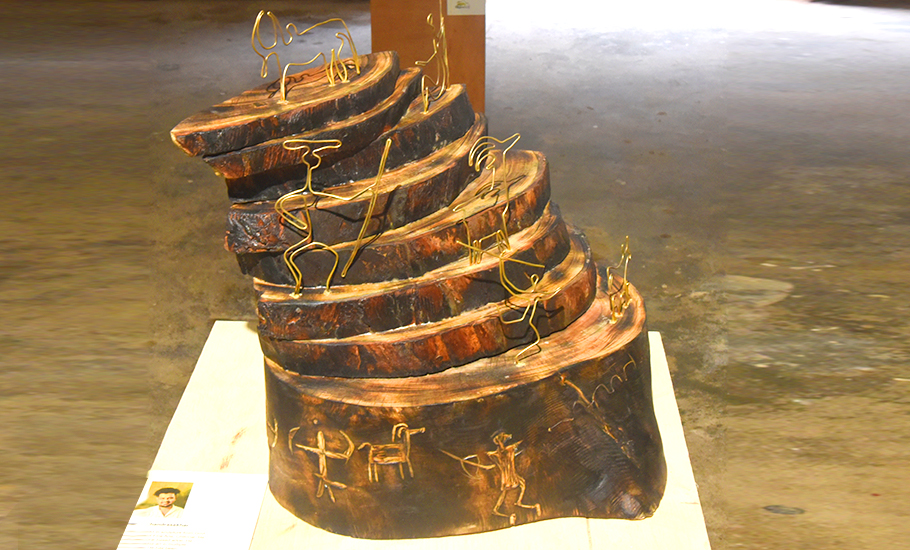
The art work displayed at SV Arcade Gallery in Kochi is part of the movement to celebrate diversity as it was done in the Sangam era by Tamils. Today, Sangam is an academy of scholars, where ancient Tamil poems, filtered from 3rd century BC to 3rd century AD, find a place of prominence.
“After the Thinai Vaasigal exhibition concludes on April 10 in Kochi, we plan to bring it to Madurai,” said artist V Saran Raj, the exhibition’s curator.
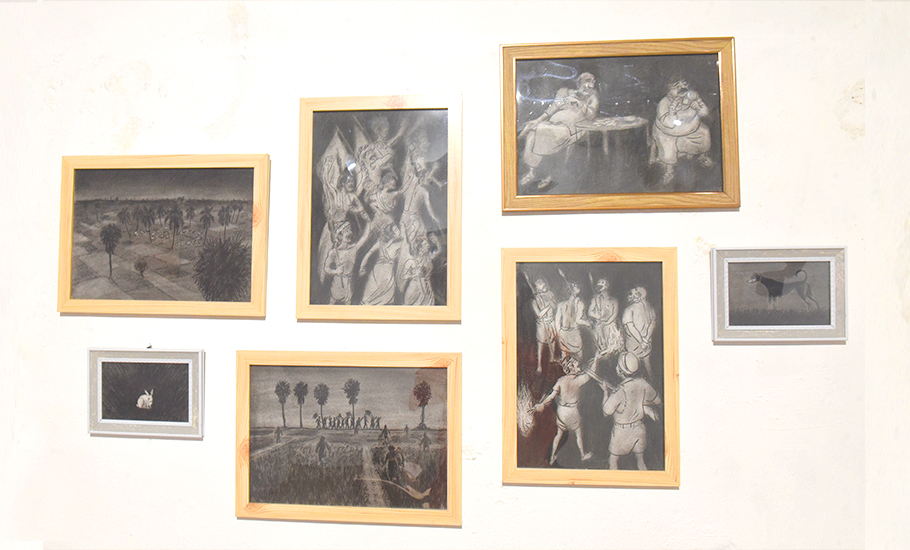
“Thinai was a unique way of segregating land during the Sangam era. Tamils, however, didn’t just segregate landscape into four types, but also expressions unique to the land forms, which could be seen more vividly in Sangam era Tamil literature. The exhibition tries to bring in varied expressions under the concept named Thinai Vaasigal (inhabitants of Thinai),” he said speaking to The Federal.
Ancient Tamils divided their land into four types: Kurinji: the hilly terrain, Mullai: the forests, Marutham: agricultural land, Neithal: the shores. They believed that any imbalance or unnatural alteration in the ecological structure leads to the fifth type of land: Paalai, parched land or desert.
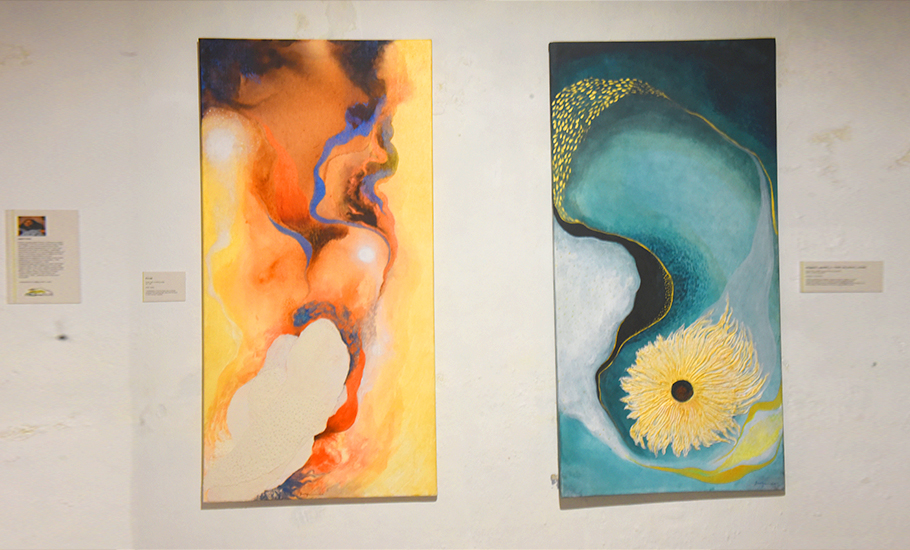
Interestingly, Thinai also refers to ancient Tamil poetry, divided into agam (inner life — personal and love life) and puram (outer — professional life, virtues, ethics and valour). One can find a clear relation between the land and its people in Sangam poems.
Each Thinai constituted its own lifestyle. For instance, people of the Marutham land, who were largely farmers, are believed to have been consumeristic. The agricultural surplus is believed to have made people of this land more materialistic than those inhabiting other land forms.
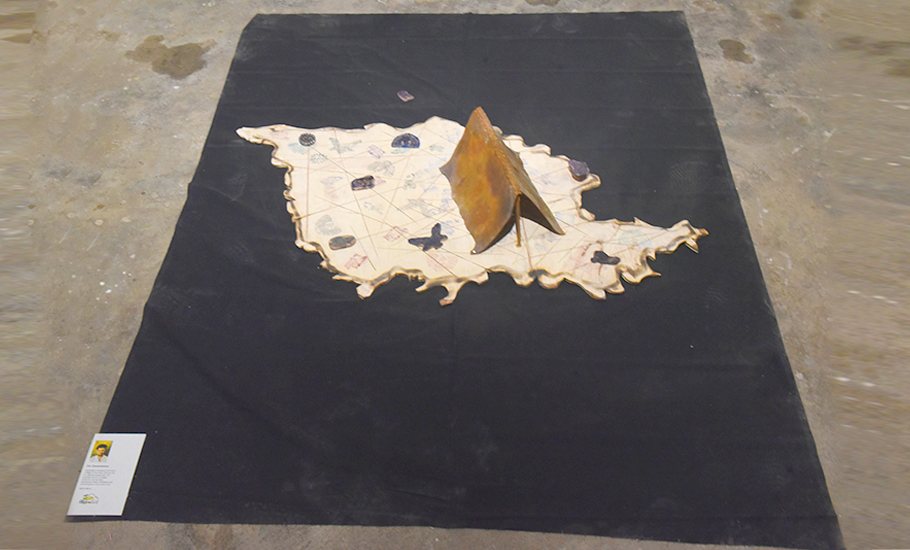
“For instance, the love poems of Agananooru depict men of the Marutham land going to whore houses more than people belonging to other lands,” said Dr J Amirtha Lenin, Tamil professor at Loyola College in Chennai.
“Ancient Tamils had an intuitive understanding of ecology and human life. They divided lands into four forms as per the insights they had and assigned characteristics unique to those lands,” he said.
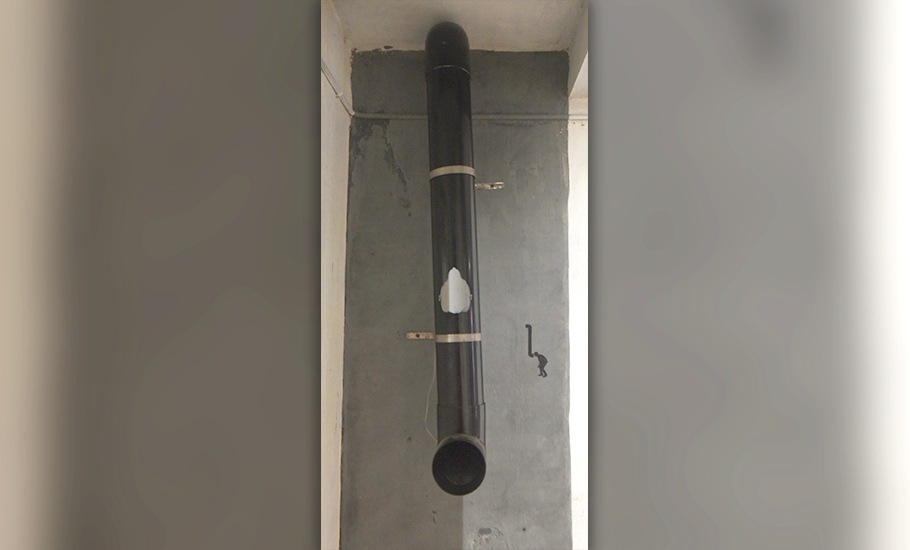
“Thinai is the basic concept under which the art exhibition is also woven around. We have sculptures, installations, video art work, documentary and paintings in the workshop,” said Saran Raj. “All of them represent varied human expressions. Artist PN Chandrasekar’s installation is a perfect example. He has sculpted figurines on the trunk of the coconut tree which represent rock paintings of the Kurinji land. He has added steel rods to add value to his installation to depict people and animals,” he said.
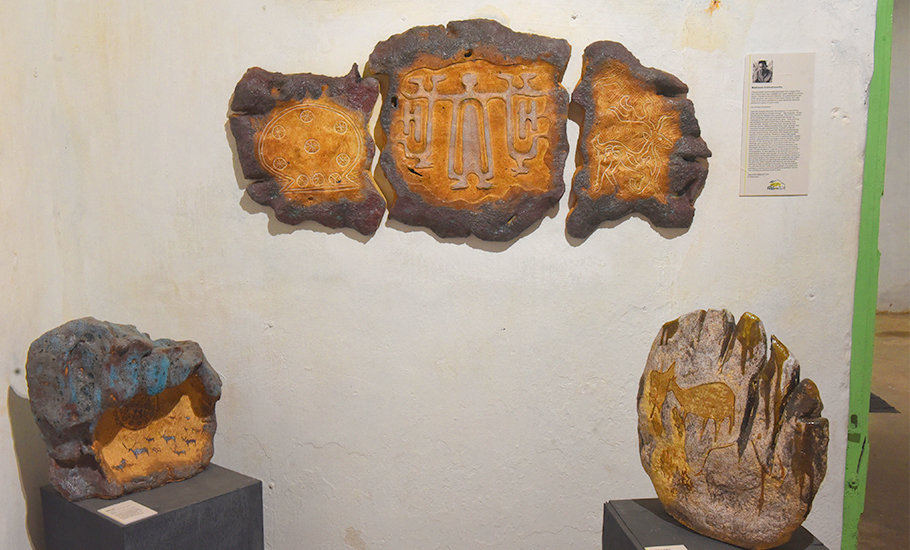
The exhibition juxtaposes the past and the present. Artist Ajaykumar’s black and white drawings on Keezhvenmani massacre of 1968 against exploitation of landlords is an example.
More than 44 women, children and elderly were burnt alive inside a hut where they had taken refuge during the incident. They belonged to the families of agricultural labourers who were fighting for higher wages with their landlords in Tamil Nadu’s then united Thanjavur district.
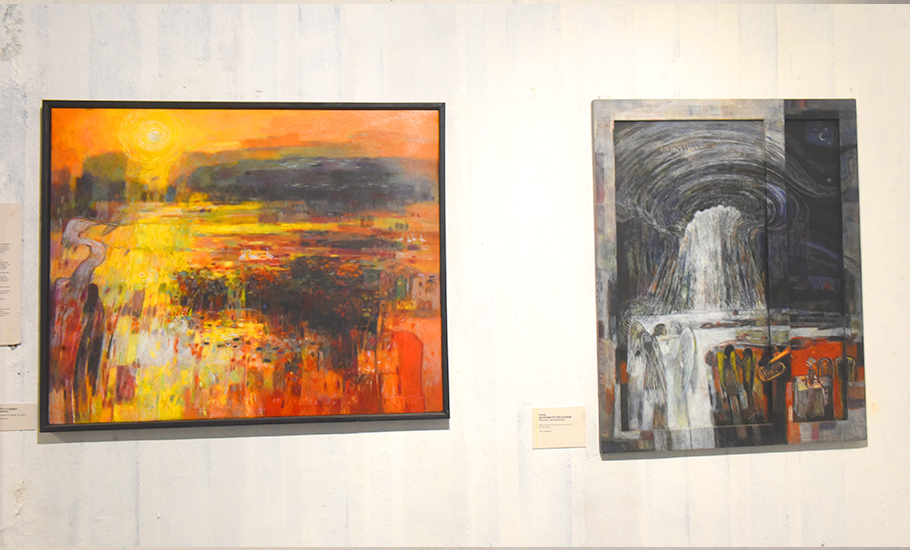
The black and white drawings portray the land and its geography, the wildlife of the land (from hunting dogs to the hunted hare), the people (rotund Zamindars to slim looking labourers), the economy (agriculture). While it appears more like Thinai land of ancient Tamil Nadu, it also portrays present-day caste dynamics.
“Art should never lose its people’s connect,” said senior artist Chandru Gurusamy, who inaugurated the Thinai Vaasigal exhibition. “When my student [Saran Raj] approached me saying he was curating an exhibition it was the first thing I told him: Art should never move away from the people. Art should reflect opinion on issues that affect the public, which could support a view or oppose it. But without that art doesn’t serve its purpose,” the former principal of Egmore Fine Arts College told The Federal.
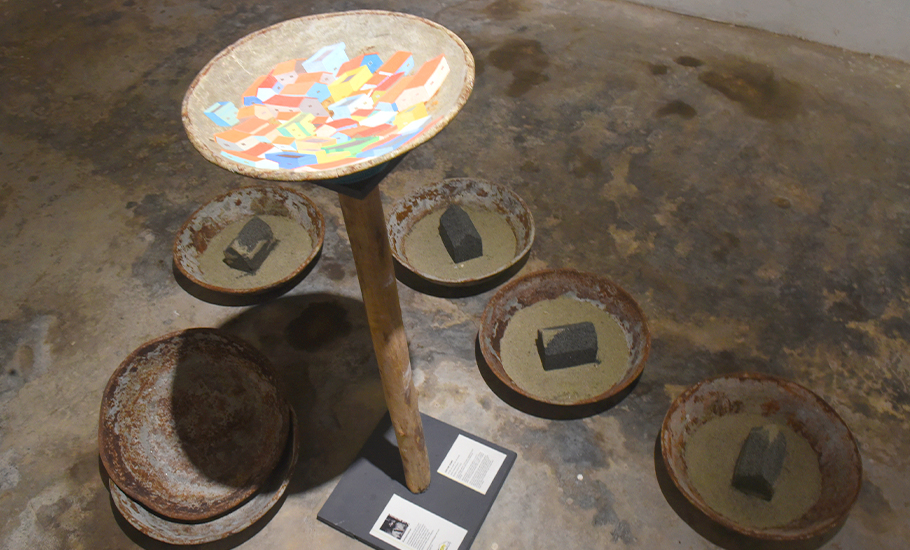
The Thinai Vaasigal exhibition today has opposing views too documented as art work. Exhibits on Keezhadi excavations are a case in point. On one hand, there are art works which document the excavations in Sivaganga district of Tamil Nadu, which glorify Tamil culture and history. On the other hand, a documentary was screened on how caste-based differences and discrimination exist in present-day Keezhadi village. “I was shocked to witness what happened when local villagers, who displayed amazing camaraderie during the excavation, returned to their homes where caste differences reign. Some of them don’t even have space inside the house to sleep, forcing them to live in the front portion of their house. People who mingled with each other on the work site, can’t even talk to one another because of caste differences when they return to their homes,” said Saran Raj.
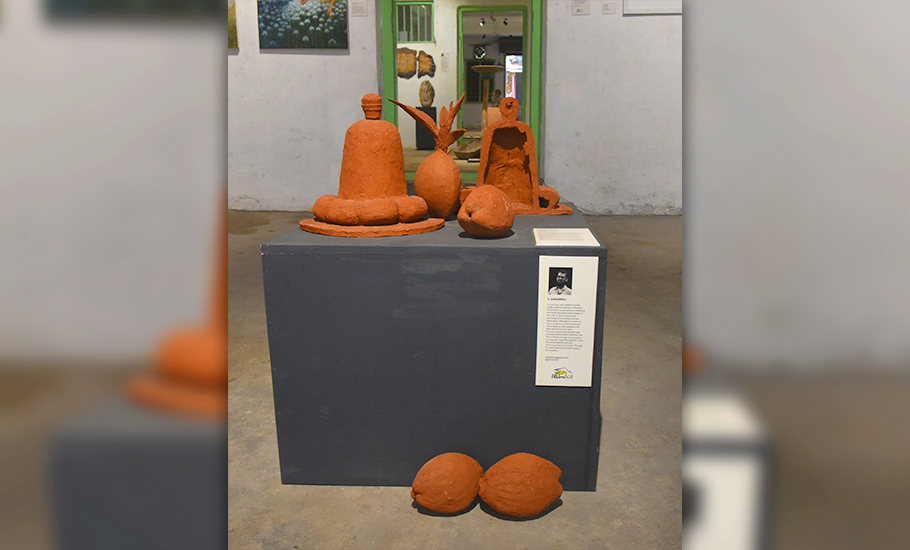
From the nomadic Narikurava tribes to social reformist Narayana Guru, the exhibition stands for connecting the past with the present. Tamil Thinai poetry is known for its visual imagery and signifies a close living with nature. In verse 172 of the Thinai based poetry collection Natrinai, the heroine refuses to make love with paramour under a laurel tree because it was planted by her mother, making the tree her sister. She reasons the presence of the tree makes her feel shy. Many such stories from the Sangam era to the current times have been packed together at the exhibition and are being told in multiple ways.

The curators of Thinai Vaasigal say they want to remind the world of the greatness of the Tamil Sangam era by providing a platform for different artistic expressions — a diversity which existed in the Thinai-based lives of ancient Tamils.
